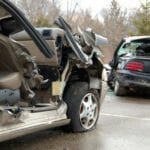Megaproblems with Megabus
April 28, 2015 / Vehicle Accidents
Driving through work zones can be perilous (you’ll find lots of information about work zone accidents on our website) — but for some passengers traveling recently through an I-65 work zone on a double-decker Megabus, it was both scary and painful.
On April 13, 2015, the Megabus was headed from Chicago to Atlanta when it approached a construction area. Although a state police car was present, with lights flashing, the bus driver ran into the rear of a semi, pushing it into an SUV and another car. Out of the 63 passengers on board, 19 were taken to one of three hospitals. Reports immediately following the incident said it was unknown whether mechanical problems with the bus contributed to the bus crash.
Pattern of Double-Deck Bus Accidents
Whether it is ultimately found that the Megabus had mechanical issues or whether the driver’s inattention caused the accident, the conclusion will not be a surprise to many who suspect the carrier may shortcut safety measures in order to offer low-cost tickets to passengers. Over the past few years, there have been numerous accidents involving the double-deck buses:
- September 2010 – A wreck near downtown Syracuse, NY, killed four people when a Megabus slammed into a low bridge.
- May 2011 – A Megabus swerved off I-95 in New York, killing 15 passengers when the bus was sliced in two.
- May 2011 – A bus driver and passenger were killed when the double-decker ran off the New Jersey Turnpike and struck a bridge support.
- August 2012 – A Megabus enroute to Chicago blew a tire near Litchfield, Illinois, causing it to slam into a concrete pillar, killing one and injuring dozens of other passengers.
- August 2012 – A Megabus blew a tire and caught fire on I-85 in Georgia. All 80 passengers were safely evacuated.
- October 2014 – A crash on I-65 in Greenwood, Indiana, injured dozens after the bus struck another vehicle which had stopped in the road. After the impact, the bus ran into a ditch, struck cable barriers and overturned. Some passengers had broken bones and head injuries, as well as cuts from flying glass.
- December 2014 – A double-decker owned by Megabus traveling from Indianapolis to Chicago came upon traffic which had slowed due to a previous accident. The bus driver ran into a Honda, a Kia, and a Chevrolet, which collided with a Subaru. Fortunately, none of the 80 passengers were injured and the injuries sustained by others in the collision were not serious, although the property damage was.
- December 2014 – A Megabus carrying 70 passengers crashed on I-65 near Seymour, Indiana. The bus slid off the road into the median, turning over onto the driver’s side. Twenty-six passengers were treated for injuries ranging from scrapes and bruises to a broken collar bone.
Pedestrians vs. Megabus
Even pedestrians have found themselves the victims in Megabus accidents. In August 2012, a 76-year-old woman was struck and killed by a Megabus in downtown Chicago. The driver was cited for failing to yield to a pedestrian in a crosswalk, and Megabus has been sued by the victim’s family. The company had recently agreed to pay $5.1 million to settle another lawsuit, that one filed by the family of a 76-year-old man struck and killed by a Megabus in 2010.
Fatality Rate 7x Higher
Megabus services 80 cities across the country. Offering city-to-city travel for fares as low as $1 through their internet site, the company reports having served more than 18 million passengers since its 2006 inception.
The fatal accident rate for traditional bus companies is two deaths per 1,000 vehicles, but for curbside companies, it’s 14 per 1,000 vehicles – seven times higher.
Tire Failures?
The tire failures in several Megabus accidents and the allegations of a lawsuit filed by passengers injured in the October 2014 Greenwood accident seem to point to lax inspections and failure to adequately maintain the buses. The plaintiffs claim the Megabus driver announced to the passengers that she was having difficulty seeing the road through the rain because the windshield wipers weren’t working and that she had to pull the bus over many times to attempt to fix the wipers. Additionally, they allege that the driver drove too fast for the wet conditions in order to make up for lost time.
It’s understandable that travelers want and need to find economical transportation. However, it’s neither understandable nor acceptable that a bus company might put its passengers in harm’s way in order to maximize their profits. If you or your loved one has been involved in a bus accident — whether a Megabus, a tour bus or a charter — call the Indianapolis injury lawyers at Stephenson Rife. Justice is just one call away — 1-317-825-5200.

 Mike Stephenson has 40 years of experience and is a trusted advisor to many individuals and companies. His current practice is dominated by civil litigation in state and federal courts. He focuses much of his time on handling catastrophic injuries caused by all types of accidents, including motor vehicle, trucking, workplace injuries, product liability, and fire, just to name a few. He also works extensively in construction accidents. [
Mike Stephenson has 40 years of experience and is a trusted advisor to many individuals and companies. His current practice is dominated by civil litigation in state and federal courts. He focuses much of his time on handling catastrophic injuries caused by all types of accidents, including motor vehicle, trucking, workplace injuries, product liability, and fire, just to name a few. He also works extensively in construction accidents. [ 